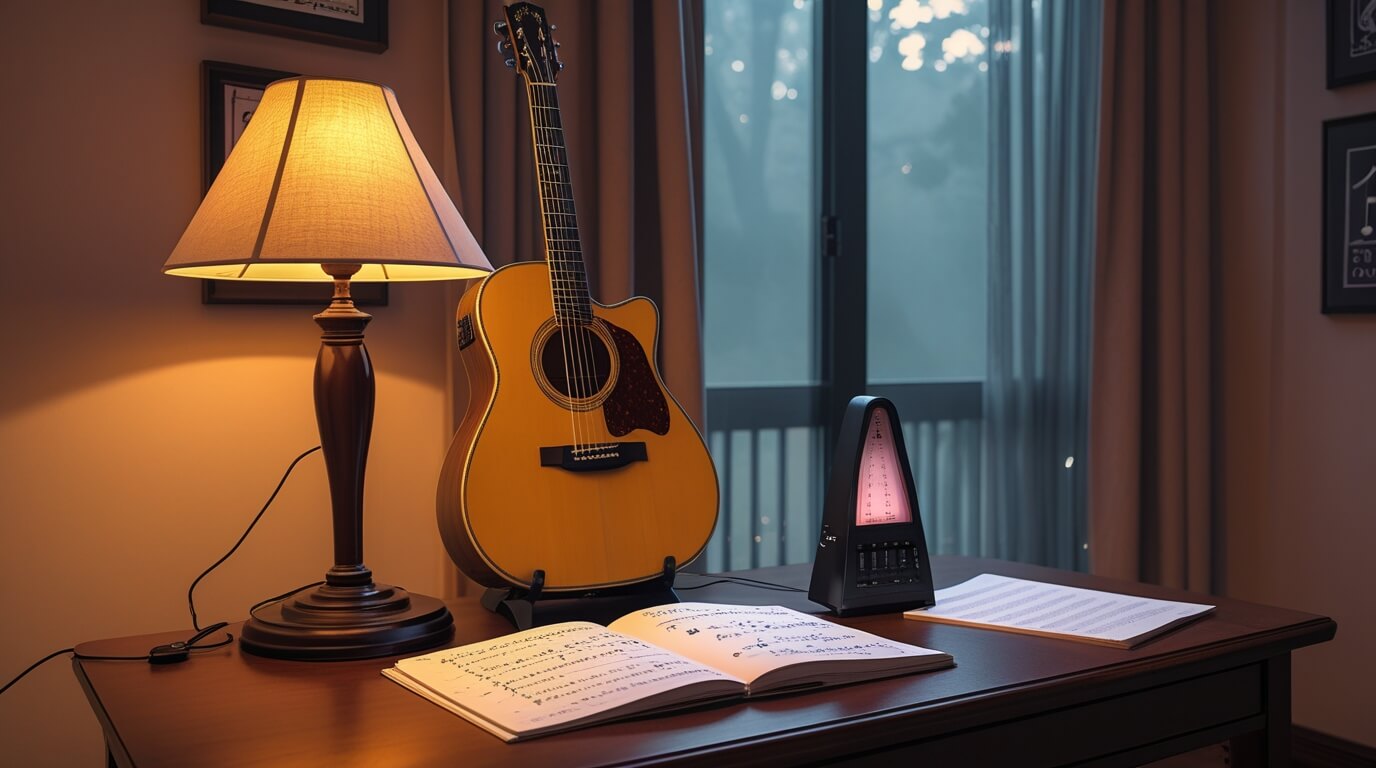August 12, 2025

If you’ve ever picked up your guitar and played aimlessly for 30 minutes, only to feel like nothing actually improved—you’re not alone. The key difference between casual playing and actual progress is having a focused routine. A solid practice routine helps build muscle memory, track improvements, and keep you motivated, even on days when you’re feeling stuck.
Let’s walk through how to create a guitar practice routine that brings real results—whether you’re a total beginner or brushing off the dust after a long break.
Before you start strumming, ask yourself: What do I want to achieve with this session?
Maybe it's:
Clear, achievable goals give structure to your time and make each session feel purposeful. If you’re not sure where to begin, check out Practice Makes Perfect: Effective Strategies for Improving Musical Skills for help setting meaningful short- and long-term goals.
Skipping warm-ups is a common mistake—and it can lead to slower progress or even finger strain.
Try this:
Warm-up ideas like the spider walk (1-2-3-4 across each string) are highly effective and used by pros and beginners alike. Need guidance? How to Use a Metronome Effectively for Practice helps you add rhythm training into your warm-ups smoothly.
You can find beginner-friendly warm-up tutorials from JustinGuitar or follow guidance from this
Rather than playing the same easy chords on autopilot, take time each session to zero in on one skill. This could be:
Isolating a skill helps you build muscle memory faster. For deeper drills and more ideas, read Beyond the Basics: Advanced Guitar Techniques for Intermediate Players.
This is the fun part—and the most motivating. Choose a song or riff just beyond your current skill level. Break it into sections and tackle one at a time.
Here’s how:
Use sites like Ultimate Guitar for accurate tabs or chords.
Need inspiration? Try the suggestions in Top Easy Guitar Songs for Beginners (That Don’t Sound Boring) for a song list that’s beginner-friendly and fun to play.
Even if you’re not aiming to be a theory expert, a little bit of knowledge goes a long way. Understanding how chords, scales, and intervals work helps you learn new songs faster and write your own music.
Start with:
For a gentle, beginner-friendly introduction, try Understanding Music Theory Without Getting Overwhelmed.
Creativity matters. End each session by doing something expressive.
Ideas:
Backing tracks are available for free on YouTube, or you can use apps like iReal Pro or AmpliTube.
Jamming builds your musical ear, keeps things fresh, and reminds you why you picked up the guitar in the first place. If you’re exploring songwriting, How to Write Your First Song on Guitar offers a straightforward path for beginners.
One of the most underrated tools in your growth: recording your playing. It’s the best way to hear your timing, tone, and progress from week to week.
You can use:
You can use free DAWs like Cakewalk or your phone’s voice recorder.
Tracking your progress over time builds confidence and helps you stay motivated during plateaus. For more on long-term improvement, visit How to Practice Guitar Daily Without Burning Out.
A great guitar routine doesn’t need to be long—it just needs to be intentional. Even 30 minutes a day can produce huge results if each section has a clear purpose.
Mix structure with creativity:
And don’t forget—your progress is a journey. Be patient. Stay curious. And use the RocketPages music learning library whenever you need trusted guidance.
Stay up to date with the latest tips, expert insights, product reviews, and step-by-step guides to help you grow, create, and succeed—no matter your industry or passion.